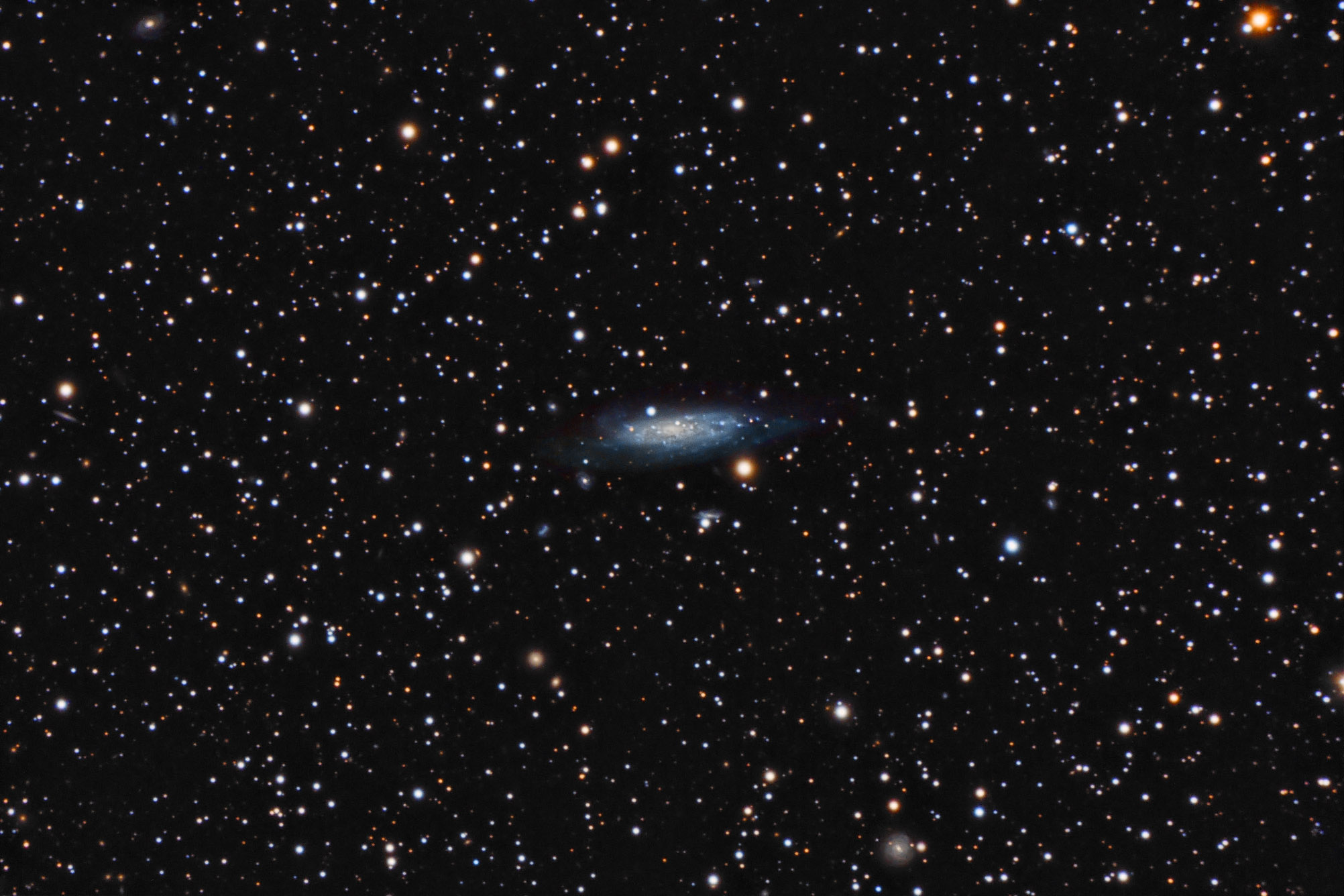| Description | Images |
Object name: NGC1003Designation(s): NGC1003, NGC 1003 is a somewhat unsymmetrical near edge-on blue spiral galaxy on the western border of Perseus. In fact, the western ansa of the galaxy is in Andromeda, not Perseus. It has the same redshift as nearby NGC 1023/Arp 135. By redshift, it is 20 million light-years distant but by Tully Fisher measurements it is about 35 million light-years from us. Tully Fisher measurements of Arp 135 put it at 34 million light-years. It appears the two are related with the same redshift but are really about 35 million light-years distant. Redshift is notoriously poor for distance at such close distance but the similarity in redshift would indicate they are likely related and traveling through space together. NED classifies NGC 1003 is SA(s)cd. The NGC project says Sc. Assuming the 35 million light-year distance the galaxy measures some 87,500 light-years if the faint cloud just above the 0.020 in the annotated image marks the far extent of the western arm. It appears connected in the raw FITS files rather than a separate object. A similar faint extension is seen on the other side as well. That would make it a good size spiral galaxy. It was discovered by William Herschel on October 6, 1784 and is in the second H400 observing program. Related Designation(s):11HUGS 051, 2MASS J02391702+4052212, 2MASX J02391689+4052202, 2MASXi J0239166+405221, ABELL 0347:[MWI88] 24, AKARI J0239157+405222, CGCG 0236.1+4040, CGCG 539-070, HDCE 0155 NED005, IRAS 02360+4039, IRAS F02360+4039, LDCE 0160 NED012, LGG 070:[G93] 005, MCG +07-06-051, NGC 1003, NGC 1023 GROUP:[TT2009] 04, NGC1003, NVSS J023917+405223, PGC 010052, UGC 02137, USGC U139 NED06, UZC J023916.9+405219, [BTW2003] J0239+4052, |

